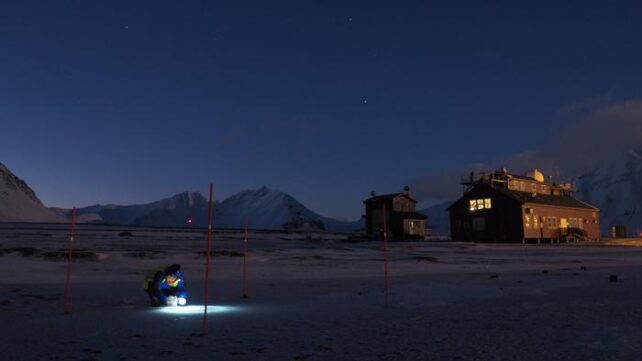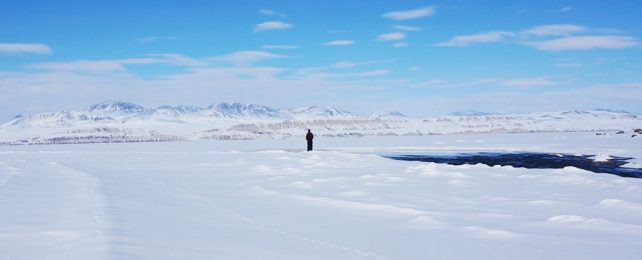The fingerprints of human activity are stamped all over the globe: in the microplastics and 'forever chemicals' that have wafted up to the Arctic and rained down over us; in the swirling masses of plastic refuse in the middle of the Pacific Ocean that few ever see; and in the greenhouse gas emissions that are still building up in the atmosphere.
Now, to add to that sobering list, traces of 13 ingredients commonly found in sunscreens and other personal care products have been found in the snowpack of five Arctic glaciers in the Svalbard archipelago.
"For some of these chemicals, this is the first time their presence is reported in snow in Svalbard," Marianna D'Amico, a polar scientist at Ca' Foscari University of Venice in Italy, and colleagues explain in their published paper.
As worrying as these findings may be, studies like this are the first step towards understanding precisely where these kinds of contaminants are found and where they have come from, after which we can work out how best to manage the problem and stop the pollution at the source.
On researchers' radar are so-called Chemicals of Emerging Arctic Concern (CEACs), a watch list of compounds identified by a group of environmental scientists that documents the extent and effects of pollution in the Arctic to inform policy decisions, known as the Arctic Monitoring and Assessment Programme.
The production and use of these chemicals have increased while our knowledge of their distribution and behavior in polar environments has lagged far behind.
Some CEACs have been found in Antarctica and the Arctic before: in surface waters, seawater, wastewater streams close to research stations, and in snow.
"Yet little is known about the primary sources of contamination in remote regions and the main transport processes," D'Amico and colleagues write, and many CEACs are not subject to any international regulation.
To gather some more evidence about their distribution, the researchers looked at 13 common ingredients of personal care products, including fragrances found in soaps and shampoos, and UV filters used in sunscreens, such as benzophenone-3 (BP3).
In the spring of 2021, they collected 25 snow samples from an active research site just south of Ny-Ålesund village, and five glaciers, up to 40 kilometers (25 miles) away. Some samples were collected from the same site but at different depths to see how concentrations changed throughout the seasons.

All but one of the glaciers sampled had higher concentrations of UV filters in snow deposited during winter than in the snowpack of other seasons. Two UV filters, BP3 and octocrylene, were also more abundant at the top of the glaciers, the researchers found.
With polar scientists visiting the glaciers frequently, the research station near Ny-Ålesund could be an added local source of pollution. Yet based on these patterns, the team suspects the UV-absorbent chemicals were most likely transported to the remote Arctic glaciers on the winds.
The Arctic Haze, for example, is a well-known polluted airmass system about as large as the African continent, that builds up over Europe during the winter months and stretches across the Arctic Circle.
Aside from working out where pollutants come from, more research is needed to understand if the contaminants found in Arctic snow are below or approaching potentially environmentally toxic levels.
The concern for D'Amico and colleagues is that when the snow melts, an influx of even low-level contaminants could possibly cause concentrations to spike in downstream watercourses and marine environments.
But we just don't know, without more sampling. Chemicals behave differently in cold, icy environments than they do in warmer regions, so specific polar studies are needed to understand the impacts too.
Some countries aren't taking any chances. Palau, a tiny Pacific Island nation, has opted for a precautionary approach, banning the use of BP-3 and other UV filters in sunscreens several years ago due to concerns about their questionable impact on coral reefs.
The study has been published in Science of the Total Environment.
